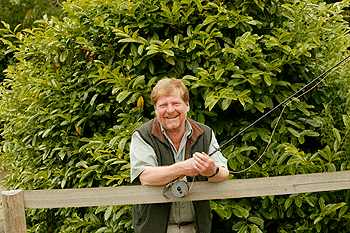Gamekeeper

I recently returned from my first ever trip to Denmark, where I went to a conference on declining farmland game and other wildlife. This was organised very efficiently by the Danish Hunters? Association, and held at the Danish Gamekeeping School at Kalo.
In many ways, Danish hunters have much more in common with us in the UK than with the rest of northern Europe ? with small game and wildfowl being far more
important to them than to many of their neighbours. Also like us, they have big concerns about the steep declines of farmland species such as grey partridge and brown hare.
One difference I detected was that there seems to be less connection between farmers and those who shoot. Whereas here the farmer is often either the shoot manager or at least a member of the team, in Denmark it appears that most farmers have little direct involvement. This, in turn, means that they seem rather behind us in the UK in taking up conservation measures like our stewardship schemes. Also, unlike here, it seems that the Danish government thinks that the way to overcome a decline in a species such as the grey partridge is through increased protection from shooting. Apparently, faced with an ever-falling population, it has now reduced its partridge season to just two weeks. Now, I guess that there may be a few shooters who will try to get every last one, but it seems to me that the route to more partridges in Denmark is very similar to our own here in the UK: better conservation and improved gamekeeping, which means the length of the open season will have little effect.
Spend two days at a conference of this sort and you get to chew the fat. I was also listening and learning about the similarities and differences in our wildlife protection laws. Somehow the question of ?temporary protection to allow the populations to recover? came up. Danish hunters are clearly as mistrustful of this as we are. ?Once gone, they?ll never be put back? was the sentiment expressed. We got talking about the ?temporary? protection of the brent geese that we share.
The little dark-bellied brent that come to southern Britain each winter breed in northern Russia, and mostly pass through Denmark on their way to us. Way back in 1954 they were at a very low population level ? around 16,000 ? and were protected here allegedly ?until numbers recover?. The main cause of decline was supposed to be a disease which ravaged their main winter food, eel grass, growing on the mudflats. To be fair, they were shot pretty hard too, and I expect that shooting pressure was a factor.
Half a century later that protected status remains, now under the EU Birds Directive, but the population is about 13 times the mid-1950s level ? making them more numerous than greylag here in winter. At their peak brent went even higher, up to about 300,000. It is perhaps inconvenient that they have recently stabilised rather below this level ? just as progress was being made by BASC, along with others, on an international management plan that would allow some shooting here in the UK.
It is true that brent have wide fluctuations in breeding success; being high Arctic nesters, they can have occasional years when the weather goes wrong and almost no young are produced. However, this is hardly a reason not to allow shooting, because the reverse is also true; in good years they can bounce back. Also, compared with those distant days of low population, there are large areas of sanctuary in the form of national wildfowl refuges and nature reserves. So any high-pressure shooting that happened here long ago could not happen now. As far as I can see, it is time that those who want to shoot a brent or two are allowed to do so.
A special irony
My main role at the conference was to give presentations on the Game & Wildlife Conservation Trust?s (GWCT) predation research and how we have developed best practice in predation control. Having shown the dramatic effect that good predation control by keepers can have on the likes of grey partridges, I was tapped on the shoulder at coffee time. ?Be careful not to blame it all on predation,? the expert said. Quite right too. You must have the habitat right, but GWCT research keeps pointing at the importance of predation control if you want to reap full benefits.
It seems that the Danes are rather constrained here, and there is perhaps a bit of muddled thinking when some species are considered both sporting quarry and predators to control. I was also surprised with a special irony. Here in the country where the Larsen trap was invented, they have finally won back the right to use it, but not with the live decoy that is essential to real and selective success.








